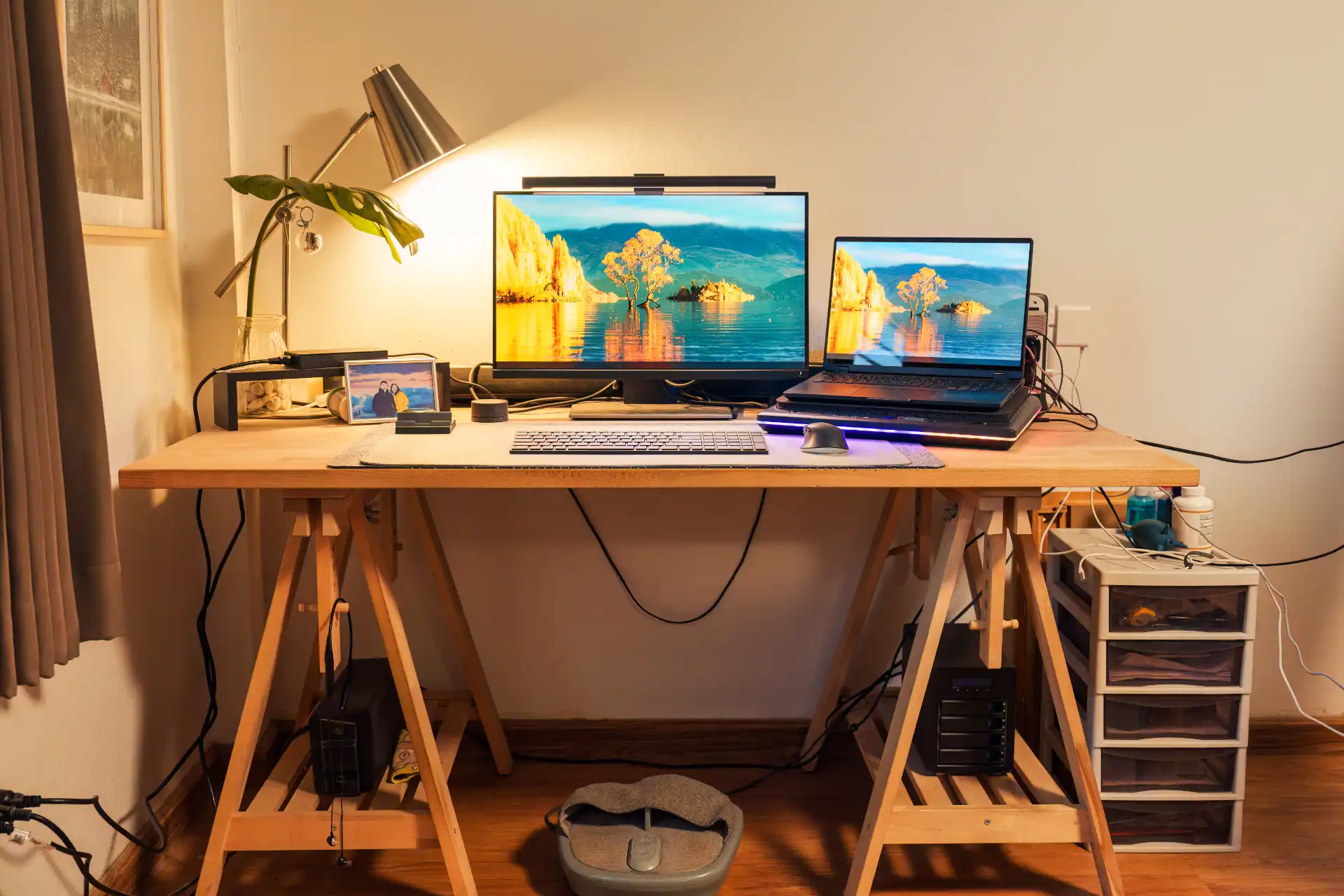As workplace wellness continues to evolve, one big question often comes up: should you choose a standing desks vs traditional desks? Both have their advantages—and understanding the pros and cons of each will help you decide which is best for your workflow, posture, and health goals.
What Is a Standing Desk?
A standing desk, also called a sit-stand desk, allows you to work while standing. Some models are fixed-height, while others are adjustable so you can switch between sitting and standing throughout the day.
Benefits of Standing Desks
- Improves posture: Standing encourages a straighter spine and reduced slouching.
- Increases energy: Many users report higher energy levels and reduced afternoon fatigue.
- Boosts calorie burn: Standing burns slightly more calories than sitting.
- Reduces back pain: For people with lower back issues, standing desks may relieve pressure.
Learn more about the benefits of standing desks from Healthline.
Drawbacks of Standing Desks
- Fatigue and leg strain: Standing too long can lead to tired legs or foot discomfort.
- Cost: Adjustable standing desks tend to be more expensive than standard desks.
- Learning curve: It may take time to adjust your posture, keyboard height, and workflow.
What Is a Traditional Desk?
Traditional desks are the standard seated workstations found in most offices. They’re available in many sizes and styles, from simple writing desks to larger executive designs.
Benefits of Traditional Desks
- Comfortable and familiar: Most people are already used to working from a seated position.
- Cost-effective: Traditional desks come in a wide price range and are generally more budget-friendly.
- More storage options: Many traditional desks include drawers, cabinets, or hutches.
Drawbacks of Traditional Desks
- Sedentary risks: Prolonged sitting is linked to back pain, poor posture, and lower energy levels.
- Less flexibility: Once you sit, it’s easy to stay inactive for long stretches.
Which Desk Style Is Right for You?
There’s no one-size-fits-all answer. Your decision should be based on your work habits, health needs, and budget.
Choose a standing desk if you:
- Want to reduce sitting time
- Have existing back issues
- Prefer more energy and movement throughout the day
Stick with a traditional desk if you:
- Work long hours and prioritize comfort
- Need lots of storage and desk surface
- Are on a tight budget
You might also consider a hybrid setup with an adjustable desk that allows you to sit or stand when you choose.
Final Thoughts
Ultimately, whether you choose a standing desk or a traditional one depends on your daily routine, personal comfort, and workspace goals. Many people even combine the two for the best of both worlds.
Looking for more ergonomic advice? Read our guide on Ergonomic Office Furniture Ideas or explore Top Office Desk Styles in 2025 to see what fits your setup.
Don’t forget—your desk is only one part of the equation. Good lighting, supportive seating, and regular movement all contribute to a healthier workday.


